


Framed or unframed, desk size to sofa size, printed by us in Arizona and Alabama since 2007. Explore now.
Shorpy is funded by you. Patreon contributors get an ad-free experience.
Learn more.

- Tough Guys
- Lost in Toyland
- And without gloves
- If I were a blindfolded time traveler
- Smoke Consumer Also Cooks
- Oh that stove!
- Possibly still there?
- What?!?
- $100 Reward
- Freeze Frame
- Texas Flyer wanted
- Just a Year Too Soon
- WWII -- Replacing men with women at the railroad crossing.
- Yes, Icing
- You kids drive me nuts!
- NOT An Easy Job
- I wonder
- Just add window boxes
- Icing Platform?
- Indiana Harbor Belt abides
- Freezing haze
- Corrections (for those who care)
- C&NW at Nelson
- Fallen Flags
- A dangerous job made worse
- Water Stop
- Passenger trains have right of way over freights?
- Coal
- Never ceases to amaze me.
- Still chuggin' (in model form)
Print Emporium
Over the River: 1909
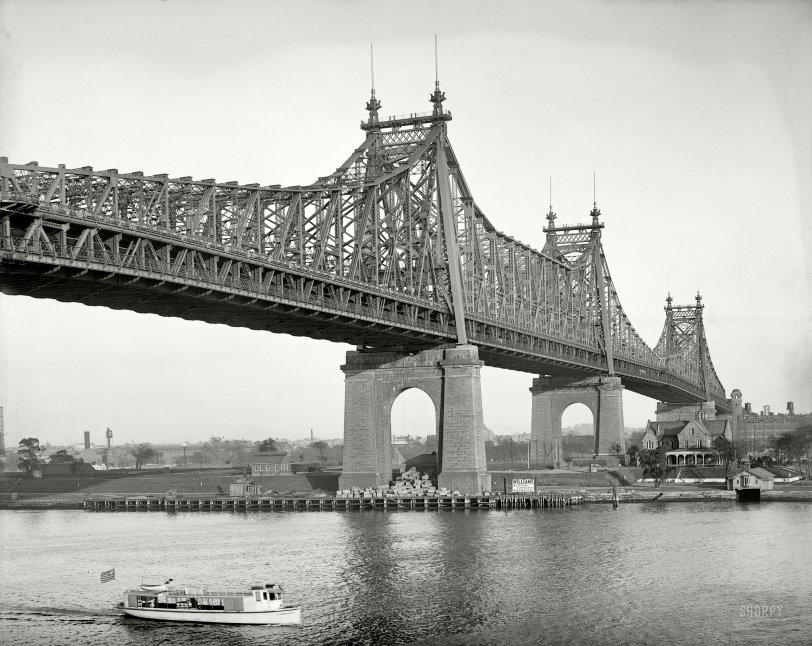
New York circa 1909. "East River and Blackwell's Island Bridge," a.k.a. the Queensboro Bridge or the 59th Street Bridge, around the time of its completion. 8x10 inch dry plate glass negative, Detroit Publishing Company. View full size.
Queensbridge and the Trolley Swan Song
Queensbridge projects went up 30 years later. It's hard to get your bearings on the photo. It flattens things and Blackwell's Island blocks our view of the rest of the river.
In foreground: West Channel of East River. Three of the bridge's four steel towers are visible. The East Channel is not; it is as wide as the span between the second and third tower. The masonry pier of the third tower marks the Long Island City shoreline. In front of it is the Blackwell's Island warden's mansion.
Beyond the third tower is the last of the bridge truss work, ending at a fourth pier sitting on the Queensbridge side of Vernon Boulevard. The domed masonry tower rising along side the bridge is part of the fourth pier. It has a twin - obscured here - on the north side of the pier. Each tower has a doorway downstairs on the sidewalk. The projects cover a lot of ground, and if Vernon was closer to your apartment than Queens Plaza, you could enter a doorway and take the elevator up to the trolley.
It's tough to picture where the projects would later be, but it can be done. Through the archway of the second tower you see a row of three-story buildings. They are on the east side of Vernon, across the street from our south "elevator tower". The spot marks the southwest corner of the projects.
In front of the buildings you see a wooded area lying on the river side of Vernon. Follow it to the left past the archway, to the arched pier of the first tower (note the boat's sail in the East Channel), past the pier to the house lying in sunshine. The house and the telephone poles along the stretch are on Blackwell's Island. Here the woods on the far side end, and across Vernon marks the northwest corner of the projects.
The wooded area became a park in 1935 - today's Queensbridge Park. Many a "home" game was played here, with "road" games a trolley ride away at the field hugging the bridge on the Manhattan side.
April, 1957 was the trolley's last trip, concluding the streetcar age for the city and the state. Take the trip:
Which way
What direction are we looking in? East? I lived near the bridge in what's called the Projects on Vernon Boulevard. As a kid I used to take the trolley with my parents to Manhattan to attend church on Second Avenue and 69th Street.
[The building shown is on Vernon Boulevard in Queens. So this is looking east. - Dave]
Sinister
Wow. Bridge into Mordor, right?
To the Island Below
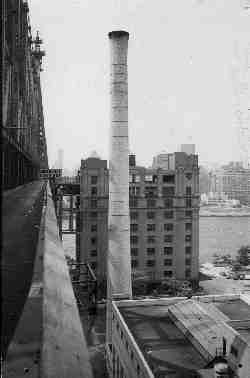
From the time the bridge opened until the mid-1950s trolley cars operated over the bridge. For much of this time the service included a stop in the middle of the bridge to access a ramp to an adjacent building containing elevators that could transport passengers down to the island below, which was by then called Welfare Island (now known as Roosevelt Island).
Between 1930 and 1955 elevators for motor vehicle access to the island were also operated, via a ramp from the bridge to this building. The island then contained a number of hospitals and some jail facilities, and the elevators were the only public access route until a direct bridge from Queens was built in 1955.
Look!
Midspan on the lower level, a trolley is heading towards Queens on what today is the outer roadway to Queens.
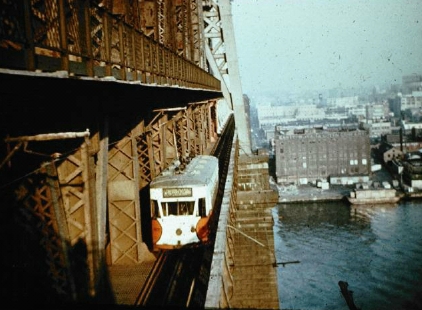
+95
Below is the same view from August of 2004 (previously seen in a very similar view here: https://www.shorpy.com/Queensboro-Bridge)
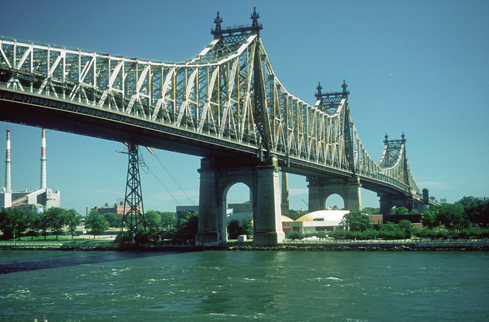
New York Architectural Terra Cotta Co.
From 1886 to 1928 this was one of the leading manufacturers of terra cotta, which was used for such landmarks as the Ansonia Hotel and Carnegie Hall.
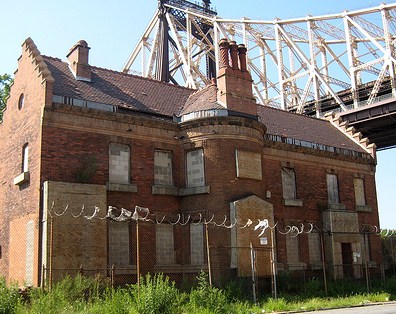

























On Shorpy:
Today’s Top 5